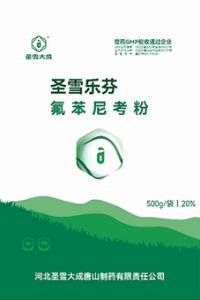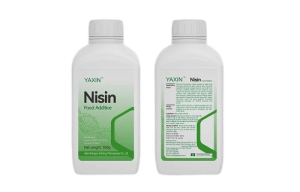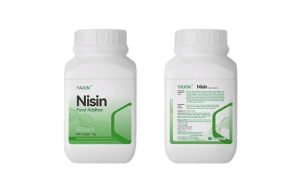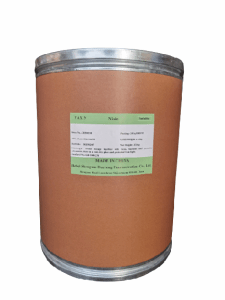Tel:+8618231198596

News
 CONTACT
CONTACT
 CONTACT
CONTACT
- Linkman:Linda Yao
- Tel: +8618231198596
- Email:linda.yao@dcpharma.cn
- Linkman:CHARLES.WANG
- Department:Overseas
- Tel: 0086 0311-85537378 0086 0311-85539701
News
Compliance with withdrawal times ensures that Florfenicol residues do not enter the food chain.
TIME:2024-10-18
Understanding Withdrawal Times
Withdrawal time refers to the period required after the administration of a drug to an animal before it can be slaughtered or its products (e.g., milk, eggs) can be safely consumed. During this interval, the body metabolizes and eliminates the drug, reducing the levels of residues below the maximum residue limit (MRL). The MRL is established by regulatory bodies, such as the U.S. Food and Drug Administration (FDA) and the European Medicines Agency (EMA), to ensure that any remaining trace amounts of the drug are safe for human consumption.
The Role of Florfenicol in Animal Health
Florfenicol is a synthetic derivative of thiamphenicol, which belongs to the amphenicol class of antibiotics. It is particularly effective in treating respiratory, gastrointestinal, and other systemic infections in a variety of animals, including cattle, swine, and poultry. Due to its efficacy and relative safety, florfenicol has become an essential tool in the veterinary medicine arsenal. However, like all antibiotics, it must be used responsibly to prevent the development of antimicrobial resistance and to protect public health.
Importance of Adhering to Withdrawal Periods
Compliance with florfenicol withdrawal times is crucial for several reasons:
Consumer Safety
Residue Avoidance: Proper adherence to withdrawal periods ensures that no harmful levels of florfenicol remain in the animal's tissues or products. This protects consumers from potential adverse effects associated with drug residues.
Public Trust: Consistently meeting withdrawal requirements reinforces consumer confidence in the safety and quality of meat, dairy, and egg products. Consumers are increasingly aware of and concerned about the presence of pharmaceutical residues in their food.
Regulatory Compliance
Legal Requirements: Non-compliance with withdrawal periods can lead to legal penalties, including fines and restrictions on farm operations. In severe cases, it may result in the complete shutdown of a producer's business.
Market Access: Many countries have strict import regulations regarding the presence of drug residues in animal products. Failure to comply with withdrawal periods can jeopardize a producer's ability to export goods, impacting profitability and market reach.
Industry Reputation
Brand Integrity: A single incident of non-compliance can damage a brand's reputation, leading to loss of customer trust and decreased sales.
Sustainable Practices: Adherence to withdrawal periods is a component of sustainable farming practices, which are becoming more important as consumers demand higher ethical and environmental standards.
Best Practices for Compliance
To ensure compliance with florfenicol withdrawal periods, producers should implement the following best practices:
Educate and Train Staff:
Provide comprehensive training to all personnel involved in animal care and treatment on the importance of withdrawal periods.
Ensure that staff understand how to read and interpret product labels, which include information on dosages and withdrawal times.
Maintain Accurate Records:
Keep detailed and up-to-date records of all treatments, including the date of administration, the dose given, and the specific animals treated.
Use clear identification methods for treated animals, such as ear tags or individual pen markings, to avoid confusion during the withdrawal period.
Implement Management Systems:
Develop and enforce standard operating procedures (SOPs) that clearly outline the steps to follow when administering florfenicol.
Consider using management software that can track and alert staff when withdrawal periods are approaching or have ended.
Work Closely with Veterinarians:
Consult with a veterinarian to establish appropriate treatment protocols and withdrawal periods based on the specific needs of your operation.
Regularly review treatment records with your veterinarian to identify any areas for improvement and to ensure that the most current guidelines are being followed.
Regular Audits and Inspections:
Conduct internal audits to verify that withdrawal periods are being observed and that record-keeping is accurate.
Be prepared for and cooperate with external inspections by regulatory authorities, which help to ensure that industry standards are maintained.
Conclusion
Adhering to florfenicol withdrawal times is a fundamental aspect of responsible animal production. It not only safeguards public health but also supports the long-term viability of the agricultural sector. By implementing best practices and fostering a culture of compliance, producers can maintain the integrity of the food chain, meet regulatory requirements, and uphold the trust of consumers. As the global community continues to emphasize the importance of food safety, the commitment to proper withdrawal period observance will be key to the success of modern animal agriculture.
- Tel:+8618231198596
- Whatsapp:18231198596
- Chat With Skype







